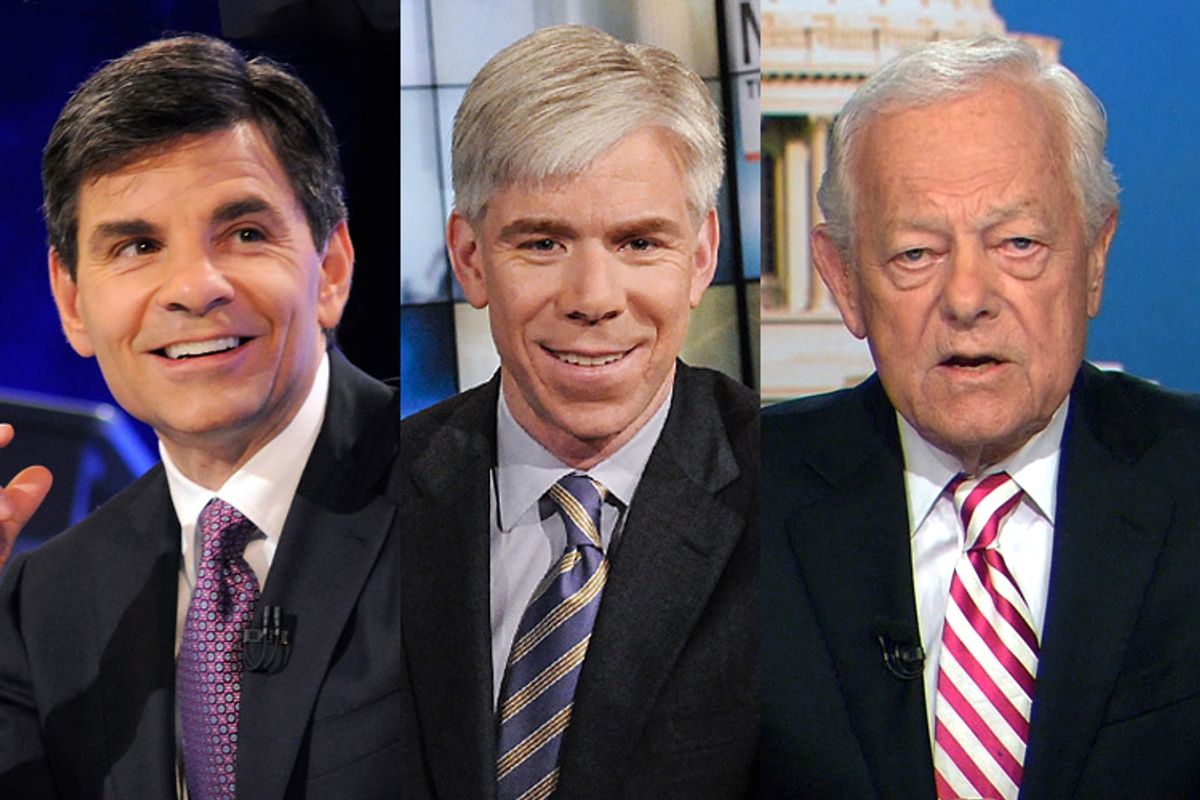The Women's Media Center on Wednesday released an update to its annual State of the Media report featuring new research about the glaring gender gap across media. The conclusion? Of the nearly 30,000 pieces of content reviewed for the study -- including broadcast news, Internet and print journalism and wire services -- 63 percent were contributed by men, compared to just 36 percent by women.
“Overall, this research is about much more than just one woman in an anchor seat, it is about making sure that who defines the story, who tells the story, and what the story is about, represents women and men equally. Women are more than half of the population, but we don’t see or hear them in equal numbers to men. It is our hope -- and our work -- to see those numbers reach parity,” said Julie Burton, president of the Women’s Media Center.
Highlights from the report:
- PBS “NewsHour” and ABC “World News” have women as primary anchors. Female anchors report 93 percent of news stories at PBS and 58 percent of news stories at ABC. NBC “Nightly News” and CBS “Evening News” feature men as primary anchors. Female anchors report 7 percent of news stories at NBC and 5 percent of news stories at CBS.
- Male correspondents at ABC, CBS, NBC, and PBS provided 66 percent of news reports from the field.
- At the nation’s 10 most widely circulated newspapers, men garnered 63 percent of bylines, compared to 37 percent for women.
- The New York Times had the widest gender gap in male-female bylines. Chicago Sun-Times, with 46 percent female bylines, came closest to parity.
- The Huffington Post had more women contributors than three other of the largest online news sites surveyed, CNN.com, The Daily Beast and Fox News.com. 48 percent of Huffington Post contributors—paid and unpaid—were women. In contrast, women contributors represented 41 percent at CNN.com, 38 percent of Fox.com contributors, and 30 percent for online-only Daily Beast.
- More women had bylines at Reuters than at The Associated Press, but at both news wires, male bylines still outnumbered female bylines: Women landed 43 percent of the bylines at Reuters and 32 percent of the bylines at The AP.
And this is what that looks like:
[caption id="attachment_13642098" align="aligncenter" width="517" caption="And this is what that looks like:"] [/caption]
[/caption]
Full report here.


Shares